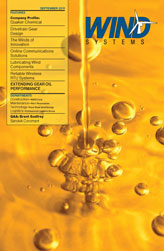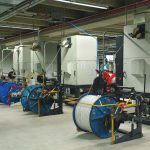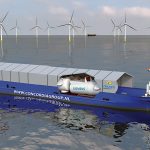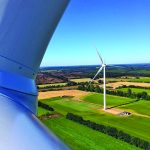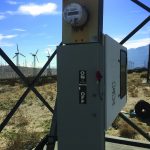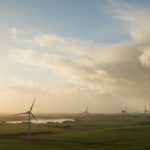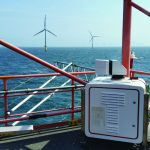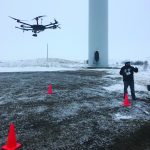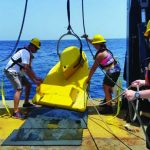The 2010 annual Wind Technologies Market Report by Ryan Wiser and Mark Bolinger, both of Lawrence Berkeley National Laboratory, was released in June 2011. It can be downloaded at www1.eere.energy.gov/windandhydro/pdfs/51783.pdf. This report has noted a decline in capacity factors for U.S. projects over the last few years (fig. 34). This is not because there has been less wind, as the trend is found when the projects are broken out by the year in which they were developed. While there are certainly several factors that may be contributing to this trend, it is reasonable to conclude that it is largely because the low hanging fruit has been developed. Sites which were found to have an excellent wind resource within close proximity to transmission lines, as well as an accessible road system and other conducive economic, political and social contributing factors, have undoubtedly been established as wind generation facilities already. As transmission constraints are increasing, developers are thus taking interest in lower wind speed sites. Additionally, on average, class 4 wind sites are 100 miles from a major load center, compared to 500 miles for class 6 wind sites. Therefore projects are becoming more challenging from an economic perspective, and wind turbine technology is rapidly evolving to meet the ever more stringent demands of grid stability, reliability, and economic extraction of wind energy from lower average wind speed sites.
Making lower wind speed sites more economical is part of the challenge. One way industry is addressing this issue is by moving away from the “one size fits some” offering of products to having multiple blade length options for a single generator size, or alternatively multiple generator ratings for a specific rotor in their product lineup. This is because there is an optimum ratio of generator rating to rotor area (specific rating, kW/m2) for each site-specific wind condition. This rating is typically in the range of 0.3 to 0.6kW/m2, with lower wind speed applications being at the lower end of this range and stronger wind resources at the upper end. Ideally there would be a plethora of options both in terms of generator size and rotor size to optimize performance for each application. Additionally, studies that model the wake flow effects of wind farms have found that overall farm performance can be improved with use of variable sizes of turbines within a wind farm. The question then is would the added cost of servicing multiple turbine types, which may require entirely distinct service contracts and crews, negate the economic gains of the performance enhancement?
As this trend of lower capacity factor development continues, design options will ultimately be needed that can help meet site specific resource constraints and allow for design optimization under specified wind resource and economic conditions. For instance, sites that experience more severe extreme winds or turbulence than is considered palatable now due to limitations of these characteristics in existing IEC wind classifications will eventually be of interest for developers, as well. Product families of turbines could be developed that employ load alleviating devices for these sites with more-severe wind characteristics.
Another way to enable the use of lower wind speed sites is to keep operation and maintenance (O&M) costs at bay, thus improving system reliability. Until very recently the wind industry was too small to drive the needed design modifications to commercial off the shelf products from other industries. Many standard parts were used, designed for other purposes. This led to some of the unanticipated reliability issues with wind turbines experienced over the last decade. Now that the modern MW-plus scale horizontal axis wind turbine has experienced strong market growth over the last several years, companies can justify the expense of designing new components and manufacturing processes that have the specialized attributes required for the demanding operating environment a wind turbine experiences. This shift is evident in the gradual reduction in O&M costs over recent years, also reported by Wiser and Bolinger (fig. 36), for more recent projects.
















